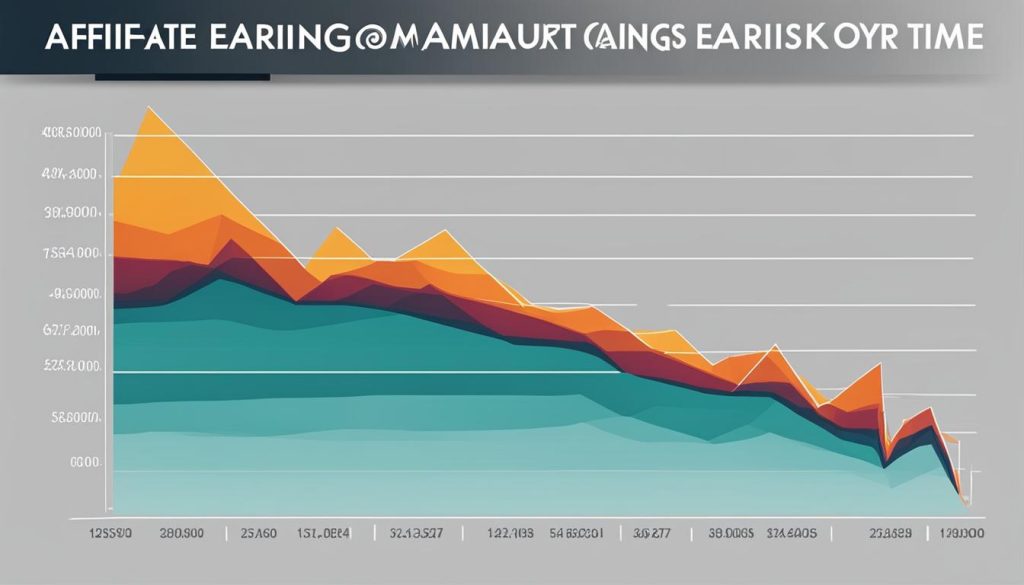Dive into the exciting world of affiliate marketing, a domain where every click has the potential to turn into earnings! Convert your site’s audience into a **passive income** source beyond your wildest dreams. This detailed guide is packed with essential tips and tactics for success, catering to both experienced marketers and newcomers alike. Stick around to discover how you can make affiliate marketing a profitable endeavor for yourself.
Discover proven affiliate marketing strategies, learn valuable tips from experienced marketers, and explore inspiring success stories that will motivate you to achieve your own affiliate marketing goals. From understanding the basics to advanced techniques, this guide covers everything you need to know to thrive in the world of affiliate marketing.
Key Takeaways:
- Learn the fundamental concepts of affiliate marketing to build a solid foundation for success.
- Explore various strategies and tactics to optimize your affiliate marketing efforts and boost your earnings.
- Gain insights from real affiliate marketingsuccess stories to stay motivated and inspired on your journey.
- Discover valuable tips and best practices from experienced marketers to help you navigate the affiliate marketing landscape.
- Stay updated with the latest industry trends and practices to stay ahead of the competition.
What Is Affiliate Marketing?
Affiliate marketing is a powerful strategy that allows you to earn money by promoting other companies’ products or services. In simple terms, it’s like being a middleman between the seller and the buyer.
When you participate in affiliate marketing, you become an affiliate marketer. As an affiliate marketer, your role is to promote and sell products on behalf of the seller or product creator. You earn a commission for every successful sale or lead generated through your efforts.
Here’s how it works:
- The seller or product creator provides you with a unique affiliate link.
- You promote the seller’s products using various channels such as social media, your blog, or email marketing.
- When a consumer clicks on your affiliate link and makes a purchase, a cookie is placed on their browser to track the sale.
- If the sale is successful, you earn a commission based on the agreed-upon percentage or amount.
Key Players in Affiliate Marketing
Affiliate marketing involves three main parties:
| Affiliate Marketer | Seller or Product Creator | Consumer |
|---|---|---|
| The affiliate marketer, also known as the publisher, promotes the seller’s products. | The seller creates or sells the products that the affiliate marketer promotes. | The consumer is the end-user who purchases the products through the affiliate marketer’s promotional efforts. |
Now that you understand the basics of affiliate marketing, let’s dive deeper into how affiliate marketers get paid and how much they can earn.
How Does Affiliate Marketing Work?
In the world of affiliate marketing, the process revolves around the collaboration between sellers and affiliate marketers. The seller provides the affiliate marketer with a unique affiliate link, which serves as a direct connection to their products or services. This link contains a specific code that identifies the affiliate marketer and tracks any sales attributed to their efforts. When a consumer clicks on the affiliate link and makes a purchase, a small piece of data called a cookie is stored on their browser.
These cookies play a vital role in the affiliate marketing process. They serve as markers, allowing the seller and affiliate network to track the successful conversion of a sale and attribute it to the correct affiliate marketer. This ensures that the affiliate marketer is duly compensated for their efforts.
- The seller provides the affiliate marketer with a unique affiliate link.
- The affiliate marketer promotes the seller’s products or services and includes the affiliate link in their marketing efforts.
- A consumer clicks on the affiliate link, which redirects them to the seller’s website.
- A cookie is stored on the consumer’s browser, identifying the affiliate marketer.
- If the consumer makes a purchase, the cookie is detected, and the sale is attributed to the affiliate marketer.
- The affiliate marketer earns a commission for each successful sale made through their affiliate link.
This entire process happens seamlessly in the background, making it easy for affiliate marketers to monetize their online presence and generate passive income. By leveraging affiliate links and cookies, sellers can accurately track and allocate commissions, ensuring a fair and transparent system for all parties involved.
Who Are the Players in Affiliate Marketing?
In the world of affiliate marketing, several key players contribute to the success of this lucrative industry. Understanding the roles and responsibilities of each player is essential for navigating this dynamic field. The main players in affiliate marketing include affiliates, sellers, networks (optional), and consumers.
Affiliates
Affiliates
or publishers are crucial participants in the affiliate marketing landscape. Affiliates are the marketers who actively promote the products or services offered by sellers. They utilize various marketing channels to drive traffic and conversions, such as websites, blogs, social media platforms, and email marketing. Affiliates earn a commission or fee for every successful sale or lead generated through their efforts.
Sellers
Sellers
are the creators or sellers of the products or services offered in the affiliate marketing ecosystem. They are responsible for developing, manufacturing, or sourcing the products that affiliates promote. Sellers collaborate with affiliates to expand their customer base, increase brand awareness, and generate sales. By leveraging the marketing expertise of affiliates, sellers can reach a wider audience and maximize their revenue potential.
th3: Networks (Optional)
Some affiliate marketing programs may involve networks that act as intermediaries between sellers and affiliates. Networks facilitate the partnership between sellers and affiliates, providing a platform where affiliates can find suitable products or services to promote. Networks also handle administrative tasks, including tracking affiliate sales, managing payments, and resolving any issues that arise during the affiliate marketing process.
Consumers
Consumers are the end-users or customers who purchase products or services through affiliate marketing. They play a vital role in the success of the affiliate marketing ecosystem by engaging with affiliate content, clicking on affiliate links, and converting into paying customers. Consumers benefit from the recommendations and promotions provided by affiliates, as these help them discover valuable products and make informed purchasing decisions.
Together, these players form a collaborative network that drives the growth and profitability of the affiliate marketing industry. Affiliates leverage their marketing skills and audience reach to promote sellers’ products, while sellers benefit from the increased exposure and sales generated by affiliates. Networks, when involved, streamline the affiliate marketing process and ensure seamless collaboration between sellers and affiliates. Ultimately, consumers obtain access to high-quality products or services recommended by trusted affiliates.

How Do Affiliate Marketers Get Paid?
Affiliate marketers have different payment models to earn their income. The most common way is through the pay-per-sale model, where they receive a commission for each successful sale made through their affiliate links.
However, there are also other payment models in affiliate marketing:
- Pay-Per-Lead: In this model, affiliates are compensated for generating leads for the merchant. When a visitor clicks on the affiliate link and performs a specific action, such as submitting a form or signing up for a newsletter, the affiliate earns a commission.
- Pay-Per-Click: With this model, affiliates earn a commission for each click on their affiliate links, regardless of whether the visitor makes a purchase. It is important for affiliates to drive high-quality traffic to the merchant’s website to maximize their earnings.
Each payment model has its own advantages and considerations. Affiliates should choose the model that aligns with their marketing strategy and target audience to optimize their earnings.
Affiliate Marketing Payment Models Comparison:
| Payment Model | Description | Advantages | Considerations |
|---|---|---|---|
| Pay-Per-Sale | Affiliates earn a commission for each successful sale made through their affiliate links. |
|
|
| Pay-Per-Lead | Affiliates receive a commission when their referred visitors complete a specific action, such as signing up for a service or filling out a form. |
|
|
| Pay-Per-Click | Affiliates earn a commission for each click on their affiliate links, regardless of whether the visitor makes a purchase. |
|
|
Understanding the different payment models and their pros and cons can help affiliate marketers choose the right approach to maximize their earnings and align with their overall marketing goals.
How Much Do Affiliates Make?
The earnings of affiliate marketers can vary greatly depending on several factors. Industry, affiliate programs, commission rates, product prices, and marketing skills all play a role in determining how much affiliates can make.
Successful affiliates with large audiences and high conversion rates have the potential to make thousands to tens of thousands of dollars per month. These affiliates have built a strong online presence and are skilled at promoting products effectively.
However, it’s important to note that the majority of affiliates earn less than $10,000 annually from their affiliate marketing endeavors. While affiliate marketing can be a lucrative opportunity, it requires time and effort to build a successful business.
If you’re considering venturing into affiliate marketing, it’s crucial to set realistic expectations and focus on consistently growing your audience, improving your marketing strategies, and building partnerships with reputable brands.
“The affiliate marketing industry is highly competitive, and earning potential varies significantly. It’s essential to have a well-defined target audience, choose the right products to promote, and constantly analyze your performance to optimize your earnings.”

Common Types of Affiliate Marketing Channels
Affiliate marketers have access to a range of different channels to promote products and drive sales. The effectiveness of these channels often depends on the target audience and niche. Here are some common types of affiliate marketing channels:
- Blogging: Bloggers create content within their niche and promote products through affiliate links. With engaging and informative blog posts, bloggers can attract their target audience and encourage them to make a purchase.
- Influencer Marketing: Influencers collaborate with brands to promote products or services through their social media platforms. By leveraging their large following and credibility, influencers can effectively endorse affiliate products and drive sales.
- Paid Search Microsites: Paid search microsites are separate branded pages that focus on specific products or campaigns. These microsites allow affiliates to have targeted marketing and create a seamless experience for potential customers.
- Email Marketing: Email marketing involves promoting affiliate products through newsletters or dedicated emails. Affiliates can build a subscriber base and send targeted offers, increasing the chances of conversions.
- Coupon Sites: Coupon sites provide discount codes and special discounts to their users. Affiliates can partner with retailers and promote exclusive deals, driving traffic and sales through their affiliate links.
Each channel offers unique opportunities and benefits for affiliate marketing success. It’s important to choose the channels that align with your target audience and effectively promote the products or services you’re affiliated with.
Benefits of Affiliate Marketing
Affiliate marketing offers numerous benefits to individuals looking to earn passive income. Whether you’re a seasoned marketer or just starting out, affiliate marketing can provide you with the flexibility, low startup costs, and scalability that can lead to financial success.
Passive Income
One of the key advantages of affiliate marketing is the opportunity to earn passive income. Once you set up your affiliate links and start promoting products, you can earn commissions on sales without actively working on each transaction. This means that while you’re sleeping or enjoying your free time, your affiliate links are working for you to generate income.
Flexibility
Affiliate marketing offers unmatched flexibility in terms of working hours and location. As an affiliate marketer, you can work from anywhere, whether it’s your home, a coffee shop, or even while traveling. You get to choose the hours that best suit your schedule and can work at your own pace.
Low Startup Costs
Compared to starting a traditional business, affiliate marketing requires minimal upfront investment. You don’t need to create your own products, handle inventory, or manage customer support. Instead, you can focus on promoting products and earning commissions. This low barrier to entry makes affiliate marketing accessible to anyone, regardless of their financial resources.
Scalability
Affiliate marketing offers immense potential for growth and scalability. As an affiliate, you have the flexibility to promote multiple products across different niches and work with various affiliate programs simultaneously. This allows you to diversify your income streams and increase your earning potential. With strategic planning and effective marketing strategies, you can scale your affiliate business to new heights.
“Affiliate marketing offers individuals the opportunity to earn passive income while enjoying the flexibility of working on their own terms.”
In summary, the benefits of affiliate marketing include the ability to earn passive income, work flexibly, start with low upfront costs, and scale your business. Whether you’re looking to supplement your existing income or build a full-time online business, affiliate marketing provides a compelling opportunity to achieve your financial goals.
| Benefits of Affiliate Marketing | Description |
|---|---|
| Passive Income | Earn income without actively working on each transaction. |
| Flexibility | Choose your own working hours and location. |
| Low Startup Costs | Requires minimal upfront investment compared to traditional businesses. |
| Scalability | Potential to promote multiple products and diversify income streams. |
How to Get Started With Affiliate Marketing
Are you ready to jump into the world of affiliate marketing? Follow these steps to start your journey towards earning passive income and building a successful online business.
Step 1: Choose a Niche
First, you need to select a niche that aligns with your interests and expertise. This will ensure that you can create compelling content and effectively promote products within your chosen niche. Whether it’s fitness, fashion, or personal finance, make sure it’s a topic that you’re passionate about.
Step 2: Join Affiliate Programs
Once you have your niche, it’s time to join relevant affiliate programs. Research and identify reputable programs that offer products or services related to your niche. Some popular affiliate networks and programs include Amazon Associates, ShareASale, and Commission Junction. Sign up for these programs and get access to a wide range of products to promote.
Step 3: Create Engaging Content
Content is king in affiliate marketing. Start by building a website or blog where you can publish valuable and engaging content for your audience. This could be informative articles, product reviews, tutorials, or even videos. Remember to incorporate your affiliate links strategically within your content, ensuring they flow naturally and provide value to your readers.
Additionally, leverage other channels such as social media platforms, email newsletters, or even podcasting to expand your reach and promote your affiliate products. Build a loyal audience by consistently delivering high-quality content and engaging with your followers.
Step 4: Optimize Conversions
To maximize your affiliate marketing success, it’s important to optimize your conversions. This involves testing different strategies, such as A/B testing your landing pages, experimenting with different calls-to-action, and analyzing your data to identify trends and opportunities for improvement. By continuously refining your approach, you can increase your click-through rates and ultimately drive more sales.
Step 5: Build Relationships
Affiliate marketing is not just about promoting products; it’s about building relationships with your audience and industry professionals. Engage with your audience through comments, social media interactions, and email newsletters. Collaborate with other influencers and affiliates in your niche to cross-promote each other’s products and expand your reach.
Step 6: Track and Analyze Data
Track and analyze your affiliate marketing data to understand what’s working and what’s not. Use analytics tools to monitor your website traffic, conversion rates, and sales. This data will help you make informed decisions and optimize your strategies for better results.
Remember, affiliate marketing is a long-term game. It takes time, effort, and persistence to see significant results. Stay committed, continuously learn and adapt, and always prioritize providing value to your audience. Start your affiliate marketing journey today, and unlock the potential of passive income and online business success.
Tips to Level-Up Your Affiliate Marketing
Once you’ve mastered the basics of affiliate marketing, it’s time to take your strategies to the next level. These advanced tips will help you optimize conversions, build stronger relationships, and analyze data to continuously improve your affiliate marketing efforts.
1. Optimize Conversions through A/B Testing
One of the most effective ways to improve your affiliate marketing conversions is through A/B testing. By creating multiple variations of your promotional materials, such as landing pages or ad copies, you can compare their performance and identify what resonates best with your audience. Continuously testing and optimizing your campaigns based on real-time data will help you maximize your conversion rates.
2. Implement Landing Page Optimization
Your landing page plays a crucial role in converting visitors into customers. Make sure your landing page is visually appealing, easy to navigate, and optimized for conversions. Elements such as clear call-to-action buttons, compelling headlines, and persuasive copy can significantly impact the success of your affiliate marketing campaigns. Regularly analyze your landing page performance and make adjustments to enhance its effectiveness.
3. Build Relationships with Your Audience
Building strong relationships with your audience is key to long-term success in affiliate marketing. Engage with your followers through various channels such as social media, email marketing, or even live events. Respond to their comments and feedback, provide valuable content, and establish yourself as an authority in your niche. Cultivating trust and loyalty will not only boost your conversions but also increase the likelihood of repeat sales.
4. Analyze Data to Refine Your Strategies
Data analysis is crucial for understanding your target audience, identifying trends, and refining your affiliate marketing strategies. Utilize available tools and analytics platforms to track key metrics such as click-through rates, conversion rates, and customer demographics. By analyzing this data, you can identify patterns, optimize your campaigns, and make data-driven decisions to continuously improve your results.
5. Collaborate with Industry Professionals
“Collaboration is key in affiliate marketing. By partnering with industry professionals and influencers, you can tap into their existing audience and gain credibility in your niche.”
Look for opportunities to collaborate with other affiliates, bloggers, or influencers who share a similar target audience. This can include joint promotions, guest blogging, or cross-promotions. By leveraging each other’s networks and expertise, you can expand your reach and attract new customers.
| Benefits | Advanced Affiliate Marketing Strategies |
|---|---|
| Increased conversions | A/B testing, landing page optimization |
| Stronger relationships | Building audience relationships, collaboration |
| Data-driven decisions | Analyzing data, refining strategies |
Implementing these advanced strategies will help you unlock the full potential of your affiliate marketing business. By continuously optimizing your conversions, building meaningful relationships, and analyzing data, you can stay ahead of the competition and achieve long-term success.
Conclusion
In conclusion, affiliate marketing offers a lucrative opportunity for earning passive income and growing your online business. By implementing the strategies and tips mentioned in this comprehensive guide, you can enhance your chances of achieving success in the affiliate marketing industry.
It is crucial to stay dedicated to your affiliate marketing efforts and continuously learn and adapt to the ever-evolving landscape. Keep in mind that providing value to your audience should always be a priority, as it is the key to building trust and fostering long-term relationships.
Remember, success in affiliate marketing does not happen overnight. It requires consistent effort, patience, and perseverance. By consistently applying the knowledge you’ve gained in this guide and refining your strategies based on data analysis, you can maximize your affiliate marketing potential and unlock greater financial rewards.









